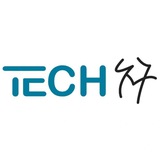📊 Database Management Systems (DBMS) Breakdown!
MySQL 🗄: Open-source, Relational 💻
Widely used for web applications and data-driven websites.
PostgreSQL 🐘: Open-source, Relational+Object-Oriented 💡
Known for its advanced features and extensibility.
MongoDB 🍃: NoSQL, Document-Oriented 📄
Ideal for handling large volumes of unstructured data.
Oracle DB 🏛: Proprietary, Relational 🏗
Enterprise-level DBMS with robust security and scalability.
SQLite 📦: Open-source, Relational, Serverless 🛠
Lightweight, embedded in mobile apps, and great for prototyping.
Redis 🔥: In-memory, Key-Value Store 💽
Blazing-fast for caching, session management, and real-time analytics.
Cassandra 🌐: NoSQL, Distributed 🧩
Perfect for handling massive data across multiple nodes.
MariaDB 🐬: Open-source, Relational 💾
A drop-in replacement for MySQL with additional features.
#Databases #DataManagement #DBMS
@Techinethio
MySQL 🗄: Open-source, Relational 💻
Widely used for web applications and data-driven websites.
PostgreSQL 🐘: Open-source, Relational+Object-Oriented 💡
Known for its advanced features and extensibility.
MongoDB 🍃: NoSQL, Document-Oriented 📄
Ideal for handling large volumes of unstructured data.
Oracle DB 🏛: Proprietary, Relational 🏗
Enterprise-level DBMS with robust security and scalability.
SQLite 📦: Open-source, Relational, Serverless 🛠
Lightweight, embedded in mobile apps, and great for prototyping.
Redis 🔥: In-memory, Key-Value Store 💽
Blazing-fast for caching, session management, and real-time analytics.
Cassandra 🌐: NoSQL, Distributed 🧩
Perfect for handling massive data across multiple nodes.
MariaDB 🐬: Open-source, Relational 💾
A drop-in replacement for MySQL with additional features.
#Databases #DataManagement #DBMS
@Techinethio
❤3⚡2
